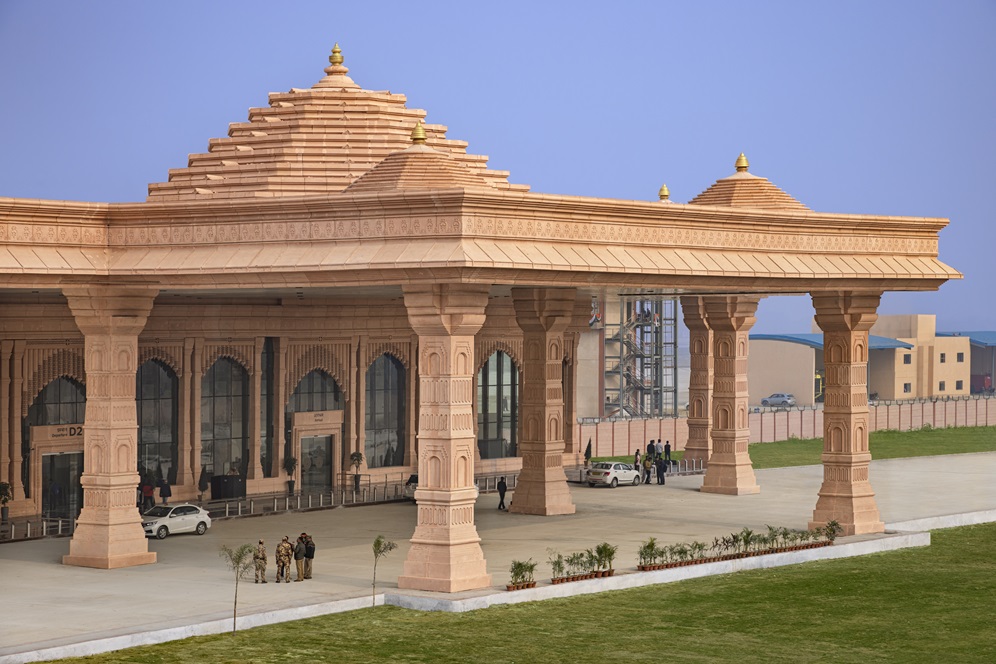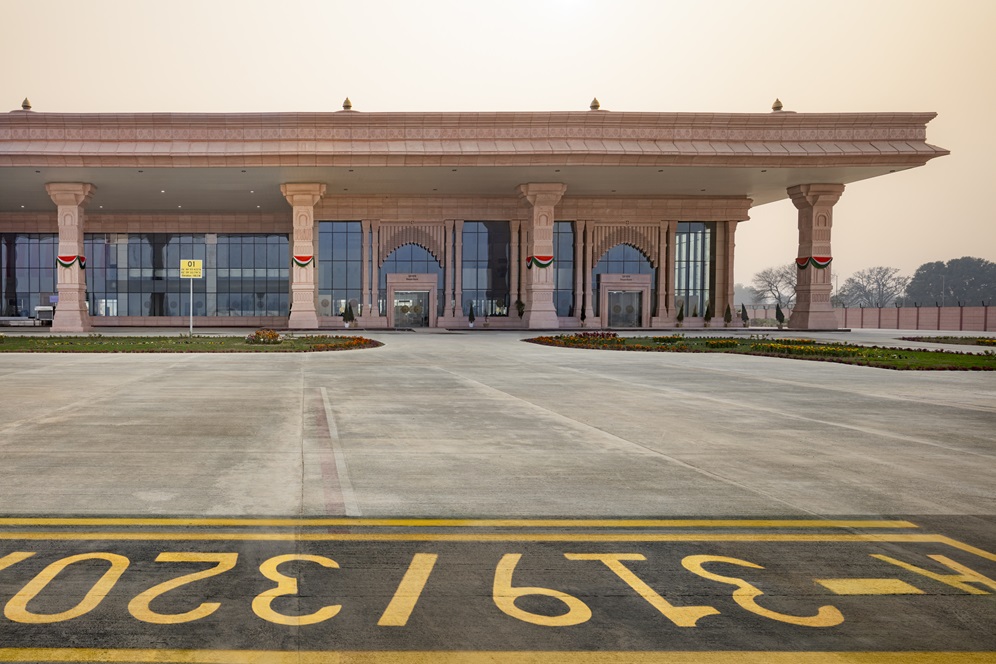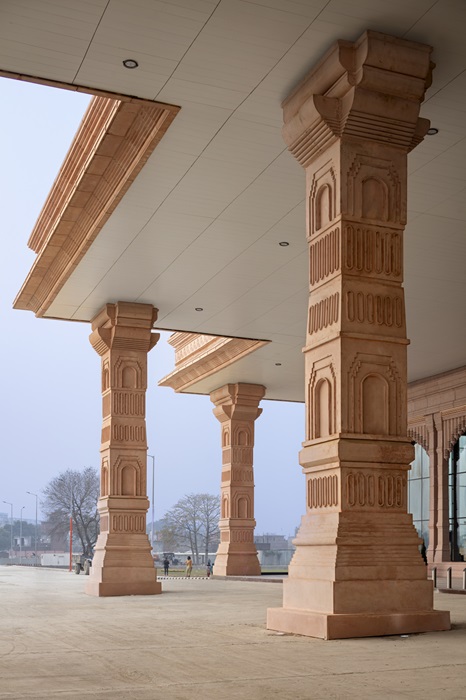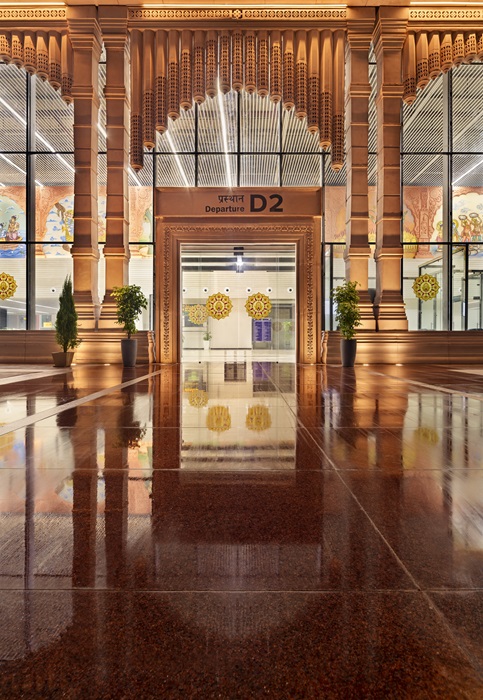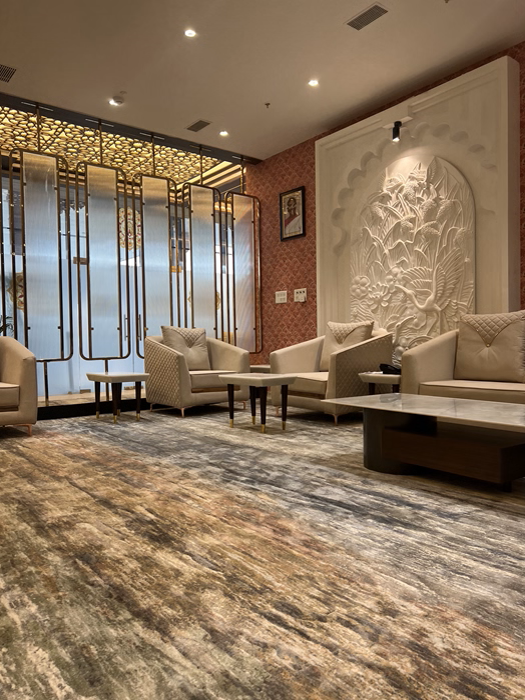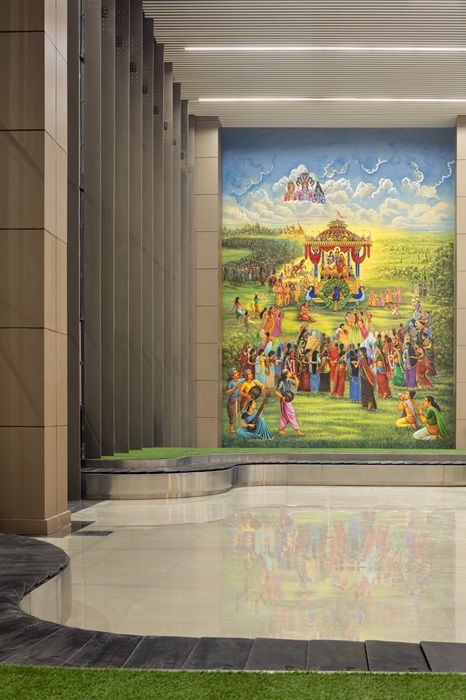Traditional heritage for Ayodhya airport
Photography: Noughts and Crosses
New Delhi-based Sthapati has designed the Maharishi Valmiki International Airport in Ayodhya, with a built-up area of 8000 sq. m. Its architecture brings together history, tradition, sustainable practices, and mythological stories —a deliberate departure from minimalism and unifying cultural expression and modern innovation. It fosters a revival of local history, remains committed to sustainability through modern advancement, and provides a platform for traditional craftsmanship.
The two-storeyed airport has a GRIHA 4-star Certification, inviting passengers to enjoy the modern facilities on the ground floor. On the first floor, one finds the airport operations in place. The building is inspired by the gradual elevation of the mandapas and nagara style of temple architecture in North India, improving connectivity across India while reflecting Ayodhya’s heritage. A stepped shikhar welcomes one at the main entrance, outlined with scriptures following the nagara style. The city’s heritage follows through intricate mega columns supporting the terminal roof symbolising the Kandas of the Ramayana.
The Khandika, symbolizing impermanence, coexists with the Deva Ganna Patta to narrate dedication, courage, and spirituality. Toran dwars, or the richly adorned entrance refer to mythology, again prevalent in the region. The Bow and Arrow mural symbolizes the courage to confront untruth, while the hexagonal light particles embody the triumph of truth over hierarchy. The artwork depicts the tale of Lord Rama in an immersive story-rich experience, and strategically placed skylights enhance wayfinding and sensorial experiences for the passengers.
The design pioneers sustainable design in aviation while using eco-conscious GRC materials to embrace carbon neutrality. Ornamental work is crafted in glass fiber reinforced concrete (GRC) after extensive research and technical precision, replacing traditional stone façade to reduce carbon emissions.


